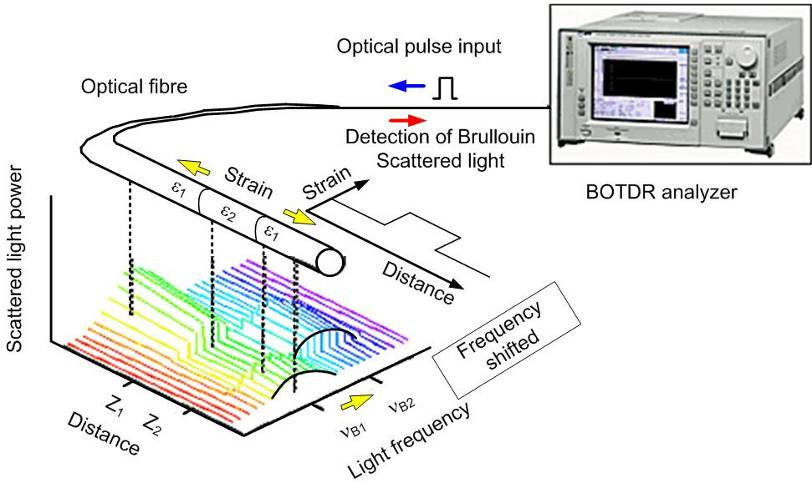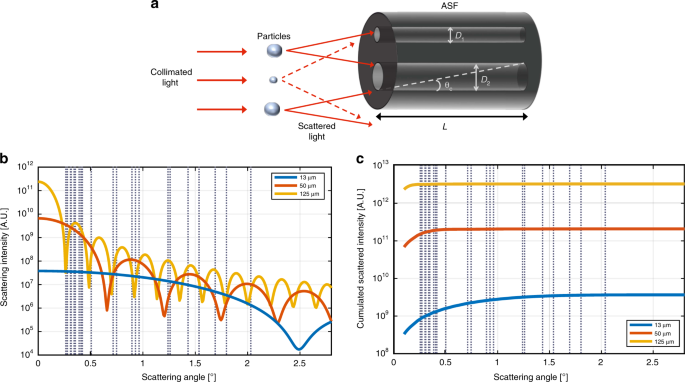Choosing the Right Optical Fibre Diameter Analyser for High Precision
Choosing the Right Optical Fibre Diameter Analyser for High Precision
Blog Article
Maximize Your Fiber Optic Performance: Understanding Optical Fiber Size Analyser Modern Technology
The efficiency of fiber optic systems is seriously influenced by the accuracy of their size, a factor often forgot in the search of ideal signal integrity. Recognizing the modern technology behind optical fibre size analysers exposes the elaborate balance between dimension precision and production quality. These devices not just enhance compliance with industry standards however also provide real-time understandings that can preemptively deal with prospective concerns. The implications of their use expand beyond mere measurement; they can fundamentally change the landscape of fiber optic effectiveness. What aspects should one consider to harness their complete potential?
Importance of Optical Fibre Diameter
The size of optical fiber plays an essential role in figuring out the efficiency and performance of interaction systems. It influences several crucial parameters, consisting of the mode of light breeding, depletion, and bandwidth capacity. Bigger sizes typically enable multiple light settings, assisting in greater information transmission rates. Conversely, smaller diameters tend to support less settings, which can boost signal clearness and lower crosstalk.

Furthermore, understanding the size's implications can lead to set you back financial savings by decreasing the requirement for signal boosting and repeaters in substantial networks (optical fibre diameter analyser). In final thought, the significance of optical fibre diameter can not be overstated, as it directly impacts the overall effectiveness and dependability of modern communication systems

Exactly How Size Influences Signal Quality
Signal top quality in optical fiber systems pivots considerably on the diameter of the fibre. The diameter influences a number of vital parameters, consisting of attenuation, bandwidth, and modal diffusion. A smaller sized diameter can bring about higher attenuation prices, leading to signal loss as light journeys with the fibre. This depletion can compromise the stability of the transmitted information, bring about a decrease in signal top quality, specifically over long distances.
Conversely, bigger sizes typically enable boosted light capture and minimized modal dispersion, improving signal quality. In multimode fibers, a bigger core diameter can sustain several light modes, but it might additionally introduce intermodal diffusion, which can break down signal high quality. Picking the optimal fiber diameter is important for accomplishing the preferred performance in details applications.
Furthermore, the interaction in between the fiber size and the wavelength of the light made use of plays a crucial duty in establishing the effective transmission range and overall signal honesty. Understanding just how fibre size affects signal high quality is crucial for network designers and engineers striving to enhance optical fibre systems for reliable, high-speed data transmission.
Summary of Diameter Analyser Innovation
In numerous optical fiber manufacturing procedures, exact dimension of fiber diameter is important for making certain constant efficiency and high quality (optical fibre diameter analyser). Diameter analysers are sophisticated tools created to analyze the physical measurements of optical fibers with high precision. They employ innovative optical and laser innovations to gauge the diameter, ovality, and concentricity of the fiber, hence supplying critical information for quality control
These analysers can operate in-line throughout the manufacturing process or as part of off-line testing protocols. In-line systems enable real-time monitoring, enabling manufacturers to readjust criteria immediately, consequently preserving optimal manufacturing conditions. Off-line analysers, on the various other hand, give extensive evaluations of sets, guaranteeing that any type of deviations from specified resistances are determined and attended to.
Diameter analysers significantly add to the decrease of problems in optical fibres, boosting total product integrity. By constantly measuring essential parameters, these innovations promote compliance with industry criteria and requirements. As the demand for high-performance optical fibers remains to increase, the function of size analysers ends up being significantly important in attaining the preferred high quality and efficiency criteria get more in fibre optic systems.
Trick Attributes of Fiber Size Analysers
Although numerous versions of fibre diameter analysers exist, they commonly share numerous vital features that improve their capability and reliability. Among the most considerable functions is high-resolution measurement abilities, which guarantee accurate size readings, important for maintaining high quality control in fibre manufacturing. In addition, numerous analysers incorporate innovative optical sensors made to identify minute variants in fibre diameter, hence supplying invaluable information for procedure optimization.
Another essential feature is real-time monitoring, enabling drivers to obtain instant responses on fibre size throughout the production procedure (optical fibre diameter analyser). This capacity assists in rapid modifications and reduces the possibility of defects. Numerous analysers also come equipped with easy to use interfaces, making it possible for drivers to easily navigate with data and setups outcomes
In addition, durable data storage and analysis capabilities are crucial for tracking historic performance patterns and ensuring compliance with market standards. These features collectively contribute to the efficiency of fibre size analysers in enhancing fiber optic efficiency.
Ideal Practices for Fibre Optimization

First, normal calibration of optical fibre diameter analysers is necessary. This ensures precise measurements and reduces possible inconsistencies that can affect performance. Next, preserving a clean working environment is essential; dust and pollutants can cause indicate degradation.
Additionally, it is very important to select fibers that satisfy certain application needs. This involves reviewing factors such as attenuation, data transfer, and ecological conditions. Proper installment techniques should additionally be abided by, including preventing sharp bends and too much tension, which can endanger fiber integrity.
Moreover, employing sophisticated surveillance systems can facilitate real-time efficiency evaluations, making it possible for prompt recognition of concerns. Regular screening and upkeep should be carried out to make sure that fibres continue to be within optimum operational specifications.
Finally, training employees on the current fibre optimization innovations and methodologies will boost their capability to execute efficient strategies. By adhering to these best methods, organizations can considerably boost the efficiency and lifespan of their optical fibre systems, making certain reliable communication and data transfer.
Conclusion
Finally, the assimilation of optical fibre you could try here diameter analyser modern technology is important for making the most of fibre optic performance. By guaranteeing accurate measurements of fiber measurements, these analysers considerably boost signal quality and lower losses throughout information transmission. Normal calibration and upkeep of the analysers are crucial to copyright optimal performance and conformity with market requirements. Ultimately, the application of this technology promotes boosted information transmission rates and reinforces signal stability, adding to the overall efficiency of fibre optic systems.
Signal high quality in optical fiber systems hinges go right here dramatically on the size of the fiber.In lots of optical fiber production procedures, exact dimension of fiber size is essential for making sure regular performance and high quality. As the need for high-performance optical fibres continues to rise, the function of size analysers becomes progressively vital in accomplishing the desired quality and performance criteria in fiber optic systems.
These features collectively contribute to the effectiveness of fiber size analysers in maximizing fibre optic performance.
In verdict, the combination of optical fiber diameter analyser technology is crucial for making the most of fiber optic efficiency.
Report this page